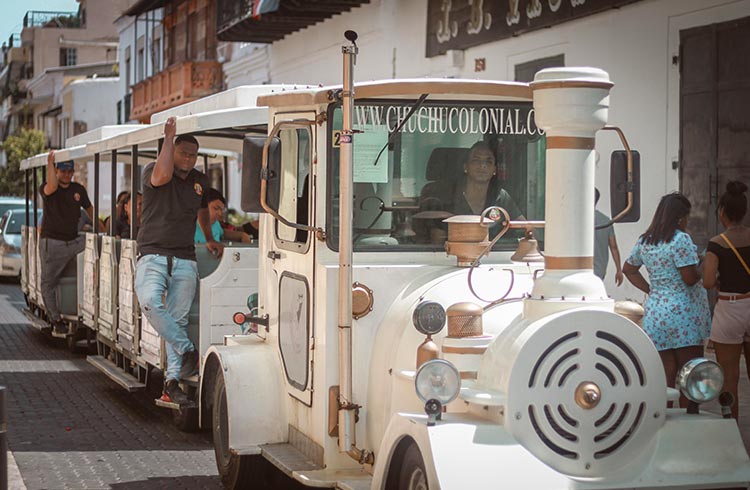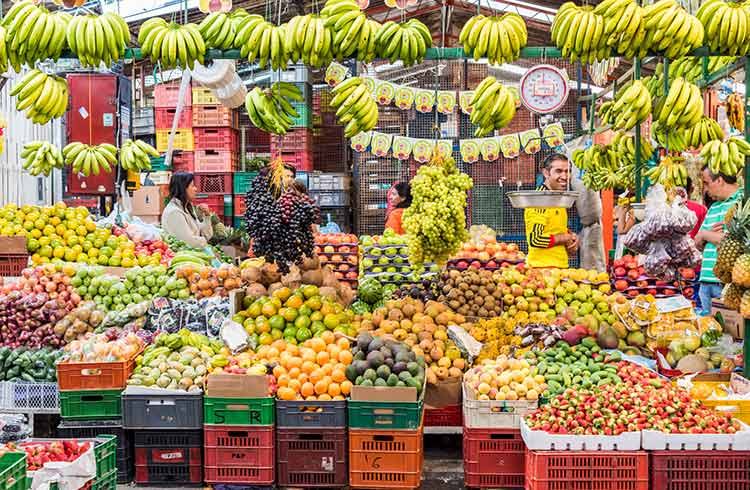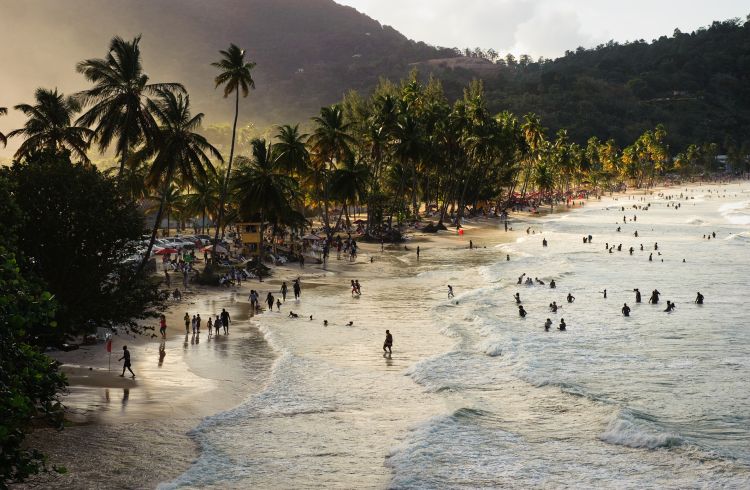How to Travel Around the Dominican Republic Safely
Our local travel safety expert, Gisselle Frias, shares her tips on public transport, driving and taxis to help you get around the Dominican Republic safely.
 Photo © Gisselle Frias
Photo © Gisselle Frias
Growing up in the Dominican Republic (DR), I loved going on road trips to see beautiful landscapes and explore beyond the tourist hotspots – which is how I learned the DR offers so much more than magnificent beaches.
For an island that is less than 20,000 mi² (50,000km²), getting around the Dominican Republic is not as easy as you might think.
Here’s what you need to know to get around the Dominican Republic safely.
- Is it safe to drive in the Dominican Republic?
- Road rules in the Dominican Republic
- Local transport safety in the Dominican Republic
- Car rental in the Dominican Republic
- Boats and water travel
Is it safe to drive in the Dominican Republic?
The Dominican Republic has some of the best highways in the Caribbean, which are paved, well maintained, and all have tolls.
Unfortunately, it also has one of the highest rates of road accidents in the world. The road fatality index is 21% higher than anywhere else in Latin America and the Caribbean. The highest percentage of fatalities involves motorcycles.
This doesn’t mean you can’t drive here, you should just be prepared and aware of the dangers on local roads.
Here are my tips for staying safe on the roads:
- If you are riding a scooter or motorbike, always wear a helmet
- Avoid driving at night on the highway due to livestock on the roads and low visibility
- Do not use your phone while driving
- Do not drink and drive
- Obey the traffic light signals– even though many Dominicans don’t
- Look both ways before you drive through an intersection if you have the green light, just in case a local is not obeying the signals
- Do not exceed the speed limit. On highways the limit is75mi/h (120km/h), main roads are50mi/h (80km/h), and in smaller towns and villages 24mi/h (40km/h)
- Watch out for pedestrians, who often run across roads unexpectedly
- Wear your seatbelt at all times
- Dominicans drive on the right side of the road
- Taking a right turn on a red light is permitted. Always do so with caution.
Road rules in the Dominican Republic
There are five new highways connecting all major cities in the country, however, you will often be sharing these with fast and reckless bus and truck drivers.
Driving around the capital city of Santo Domingo is a challenge, for locals as well as for visitors. Traffic congestion in the capital is an issue, and people drive more aggressively than elsewhere in the country.
When driving on roads outside the city, you might encounter police and military at roadblocks. This is normal, and they will check to see if you are carrying weapons – which is common among locals, who must show all up to date documents with permission for the weapon. Travelers must show a driver’s license and up to date vehicle documents. Never pay bribes – you must show the papers required.
Emergency numbers
- 911 police, fire, ambulance
- 829-688-1000 (Roadside Assistance called MOPC)
Local transport safety in the Dominican Republic
Public transport is improving. As well as the Santo Domingo metro, there are carros publicos (public cars), buses, motoconchos (taxi motorbikes) and taxis available throughout the country.
Santo Domingo Metro
This subway operates on two lines and is most commonly used by commuters. A subway card costs US $0.40 (RD $20) for one trip, US $0.75 (RD $40) for a roundtrip and US $1.50 (RD $80) for a day pass.
The subway operates daily from 6am until 10pm.
Carros publicos
These are small public cars used as public transport that carry up to seven people and can get pretty cramped. The best way to recognize these cars are by the sign on the roof which shows their route.
- Always check the driver is going where you’re going before getting inside
- The best way to hail one is by sticking your hand out to wave the driver down and they will drop you wherever you request to get out.
Public cars cost between US $0.50–$1 (RD $25–$50).
Coach and bus services
There are three main private coach companies for long-distance travel, which are all reliable, affordable and well equipped.
- Bavaro Expreso operates daily and connects travelers from Santo Domingo and Bavaro
- Caribe Tours offers transport routes from Santo Domingo, Santiago, Puerto Plata, Sosua, Barahona, Cabrera, Jaraboca, La Vega, Montecristi, Samana and Haiti
- Metro Tours departs from Santo Domingo to La Romana, Santiago, Puerto Plata, Sosua and Port-au-Prince, Haiti.
Prices range from US $3.70–$9.50 (RD $200–$500) one-way.
Public buses (guaguas)
Public buses, known locally as guaguas, are like carros publicos but cheaper – they have set routes, but are always overcrowded, so you must pay attention to your belongings to avoid being pickpocketed.
Although they follow specific routes, they stop whenever the driver spots a possible passenger, honking the horn all the way.
These usually cost about US $0.50(RD $25).
Low-cost buses
Low-cost buses (known locally as low-cost guaguas) are generally cheaper than coaches and take passengers from the city to towns further away beyond the set routes offered by public buses and cars.
If you are in a hurry, make sure to hop on one with a sign that reads ‘Expreso’, otherwise the driver will stop to pick up other passengers along the way.
Motoconchos (taxi motorbikes)
Taxi motorbike drivers are often reckless, and the majority do not wear helmets. If you are traveling on one and they drive too fast, you can tell them to slow down by waving with your hand up and down or by saying “mas despacio, por favor” (slower please).
Taxis
Taxis in the Dominican Republic are unmetered. Fares are fixed, and they vary depending on the distance.
Here are a few other tips to stay safe when taking taxis:
- Avoid taking unlicensed taxis –they don’t have a taxi company sign on the roof
- When you call a taxi company to make a booking, ask for the color of the car and its license plate details. Share this information with a family member, friend or staff at your hostel
- Always check the fare when booking, before agreeing to a ride.
UBER and Cabify are two ride-sharing options. They are safe to use just like elsewhere around the world.
Car rental in the Dominican Republic
Major car rental companies are located at the airport and in city malls.
Renting a car is a great option to explore the island with freedom. Prices vary depending on the company, so shop around. You must be 25 years or older to rent a car in the Dominican Republic.
The following documents are essential for driving in the Dominican Republic:
- ID or passport
- Driver license (with at least six months’ validity)
- Up-to-date vehicle papers
- Valid car insurance.
Boats and water travel
Boats in the Dominican Republic are generally safe to use and well maintained.
Here are a few tips to staying safe on board a boat trip in the Dominican Republic:
- Make sure the tour operator has a license from the Ministry of Tourism (MITUR). Check their website or read online reviews
- Always ask how many people will be traveling on the boat and if there are enough life vests on board for everyone.
- Do not drink too much alcohol when you are on board a boat. Tourists tend to get a bit carried away with drinking while on the sea. This can leave you dehydrated and hungover, and vulnerable in an emergency.
When booking boat day trips or tours in the Dominican Republic, make sure to also book through licensed providers. There are many dodgy tour operators that will approach you on the street or beach selling a trip, but who operate without insurance and do not adhere to safe practices. Although you may save a few dollars, the risk is not worth it.
Research online or ask staff from your hostel or accommodation for any recommendations on licensed tour operators.
Related articles
Simple and flexible travel insurance
You can buy at home or while traveling, and claim online from anywhere in the world. With 150+ adventure activities covered and 24/7 emergency assistance.
Get a quote


No Comments